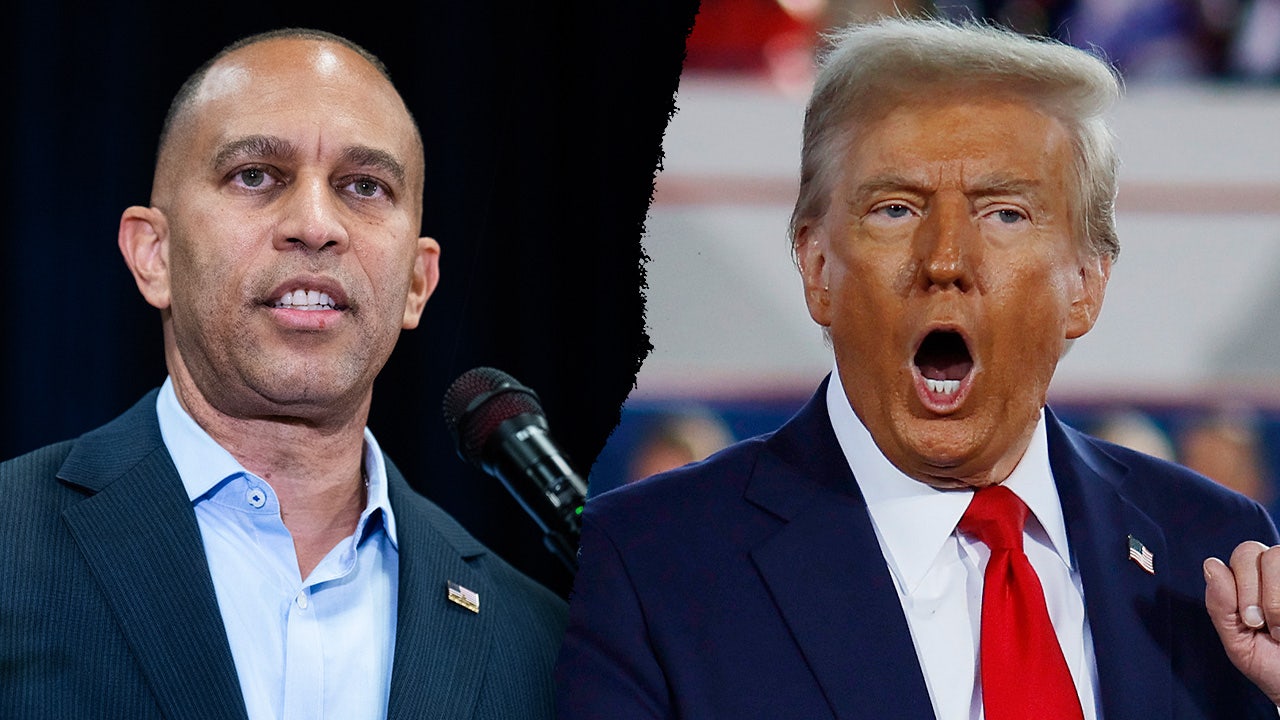WASHINGTON — President Trump said Friday that he will implement massive 25% tariffs on Canadian and Mexican imports and an additional 10% tariff on Chinese products Saturday — and that he plans to deploy many more soon.
“No, nothing — not right now, no,” Trump said when asked if America’s top three trading partners could do anything to avoid the economic hammer.
“There could be some temporary short-term disruption, and people will understand that.”
Trump threatened the tariffs in shortly after winning the Nov. 5 election, citing fentanyl smuggling and illegal immigration, but at the time it was widely assumed to be a bargaining tactic.
The president said Friday evening that he’s enacting the tariffs as punishment for Canada and Mexico’s failure to reduce the flow of drugs and people across the borders, as well as to reduce US trade deficits.
“We have big deficits, as you know, with all three of them. And in one case they’re sending massive amounts of fentanyl, killing hundreds of thousands of people a year, with the fentanyl. And in the other two cases, they’re making it possible for this poison to get in,” Trump said in the Oval Office.
“And number two, we have big deficits and it’s something we’re doing. And we’ll possibly very substantially increase it, or not, we’ll see how it is.”
Fentanyl produced largely in China and smuggled over US land borders and through the international shipping and mail systems has killed at least 281,000 Americans over the previous four years, according to Centers for Disease Control and Prevention data last updated in August.
Asked if he was willing to change his mind in response to action from the countries, Trump said, “We’re not looking for a concession and we’ll just see what happens.”
China is America’s top source of imports — comprising about 16.5% in 2022, according to the Office of the US Trade Representative. Mexico is the second-largest — at about 14% — followed by Canada — about 13.5% — meaning Trump’s tariffs will impact roughly 44% of the overall value of incoming goods.
Canadian Prime Minister Justin Trudeau protested the looming levies Friday, tweeting: “No one — on either side of the border — wants to see American tariffs on Canadian goods. I met with our Canada-U.S. [sic] Council today. We’re working hard to prevent these tariffs, but if the United States moves ahead, Canada’s ready with a forceful and immediate response.”
Trump also said that he has much grander plans for tariffs.
“We’re going to be putting tariffs on steel and aluminum, and ultimately, copper. Copper will take a little bit longer,” he said, repeating a prior threat and saying those likely would come in February.
“Also we’ll be doing pharmaceuticals to bring our industry back,” he announced for the first time.
“We want to bring pharmaceuticals back to the country. And the way you bring it back to the country is by putting up a wall. And the wall is a tariff wall.”
Trump added he would apply tariffs to computer chips “and things associated with chips” — after previously blasting the bipartisan $280 billion CHIPS and Science Act of 2022, which offered financial incentives, rather than penalties, to companies.
The president also teased plans to tariff the European Union.
“Do you want the truthful answer, or should I give you a political answer?” Trump asked rhetorically, before saying: “Absolutely.”
“Absolutely, the European Union has treated us so terribly,” he said.
“The European Union charges us 20% — plus, plus, plus, a VAT tax… It costs us an absolute fortune. We are treated so badly. They don’t take our cars, they don’t take our farm products, essentially, they don’t take almost anything. And we have a tremendous deficit with the European Union. So we’ll be doing something very substantial with the European Union.”
Democrats and pro-free-trade advocates say that the new tariffs could increase consumer costs.
“Tariffs don’t cause inflation. They cause success. They cause big success,” Trump insisted.
White House press secretary Karoline Leavitt said earlier Friday that “Americans who are concerned about increased prices should look at what President Trump did in his first term. He effectively implemented tariffs and the average inflation rate during the first Trump administration was 1.9%.”
Trump’s first-term tariffs included a 25% tariff on steel and 10% tariff on aluminum from most countries, imposed in 2018, and tariffs between 7.5% and 25% on Chinese goods comprising $362 billion of annual imports, or more than half of the total.
On Thursday, Trump defended his plans to tariff Canadian and Mexican goods, saying “we don’t need what they have.”
“We have all the oil you need. We have all the trees you need, meaning the lumber,” Trump said. “We have more than almost anybody in those two categories. In oil, we have more than anybody and we don’t need anybody’s trees.”















